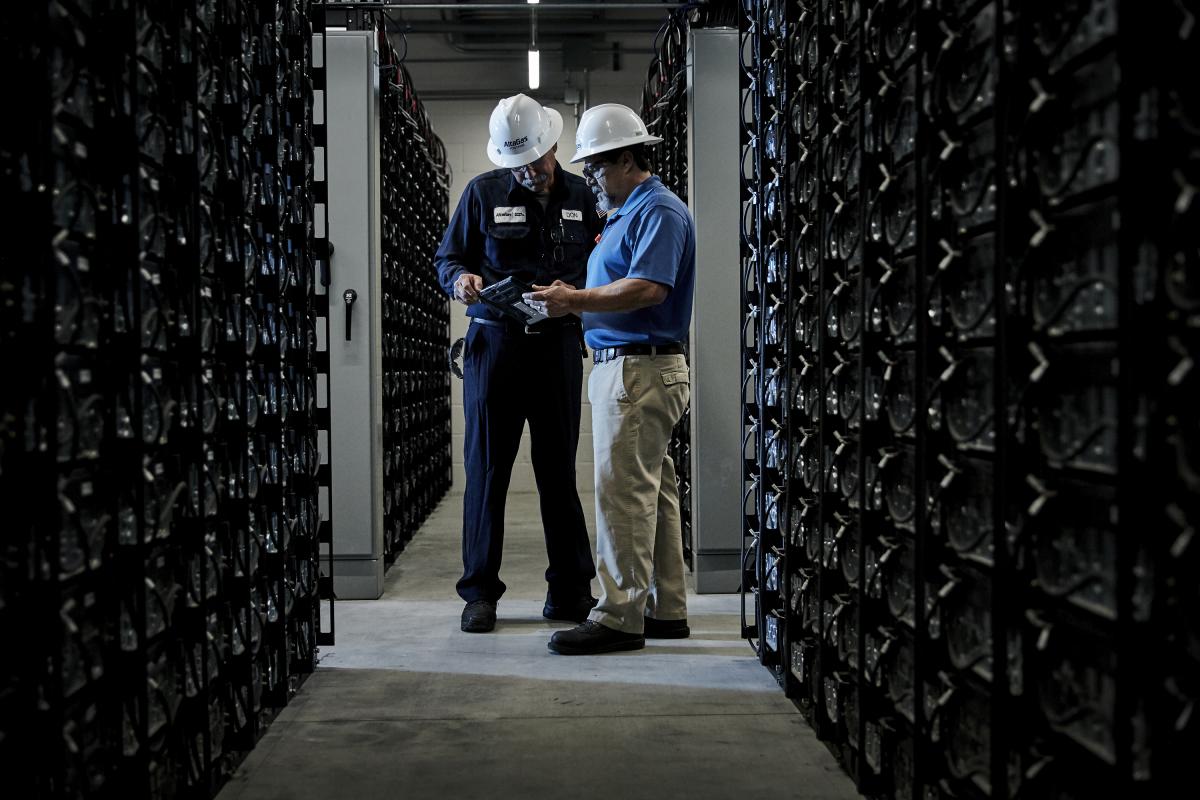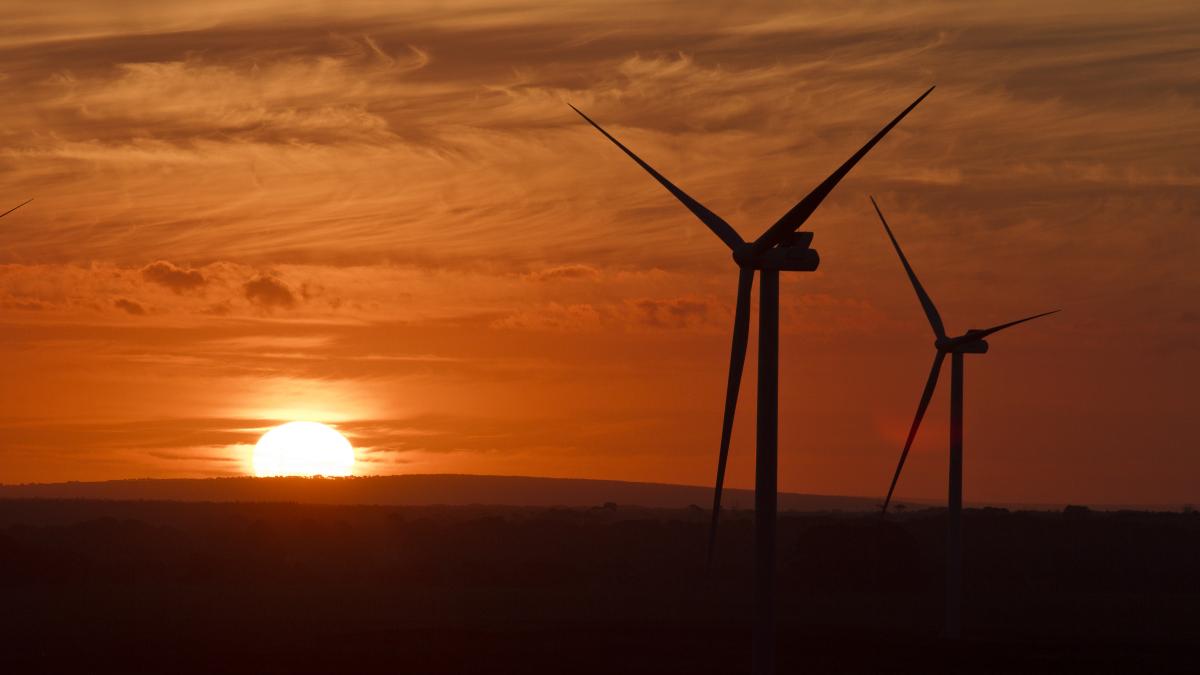With energy storage forecast to experience the same explosive growth trajectory as solar, the barriers to a distributed energy future are tumbling down, writes Mike Scott
One of the key developments of 2017 has been the way that energy storage, microgrids and distributed generation entered the mainstream.
They started the year as technologies full of promise for the future – once all the glitches could be ironed out – and they ended it with Bloomberg New Energy Finance forecasting that the energy storage market will experience the same explosive growth that solar did between 2000 and 2015. “The global energy storage market will double six times between 2016 and 2030, rising to a total of 125GW/305GWh,” the clean energy analysts said.
The International Renewable Energy Agency (IRENA) is even more bullish, saying that total battery storage capacity will grow from 2GW today to around 175GW by 2030, driving costs down by two-thirds. A report by Smartest Energy says that UK battery capacity will grow up to 100-fold by 2020.
Unlike solar and wind, which continue to create problems for the energy market’s incumbent utilities, energy storage provides solutions, and quickly
The demand for energy storage is being driven by the rapid growth of electric vehicles and renewable energy, and the need this creates for a way to store surplus energy and fill the gaps in output when the sun isn’t shining or the wind isn’t blowing. At the same time, coal-fired power stations are being phased out and nuclear power stations are coming to the end of their lives.
However, there are two further reasons for the sector’s forecast future growth: it has proved its worth and its robustness in a range of situations and settings, and the number of new applications for energy storage keeps increasing.

Unlike solar and wind, which continue to create problems for the energy market’s incumbent utilities, energy storage provides solutions, and quickly. One of the most high-profile of these came in response to the huge gas leak at California’s Aliso Canyon gas storage facility in 2015, which threatened power shortages across the state because part of the gas was used to provide electricity at times of peak demand.
After regulators accelerated approval for 100MW of storage capacity in May 2016, Tesla, Greensmith Energy and AES Energy Storage were able to bring the capacity online in just six months.
Later in the year, in response to blackouts in South Australia that were variously blamed on too much renewable energy capacity and poor transmission facilities, Tesla CEO Elon Musk promised to install a battery back-up system for the state’s grid within 100 days or it would be free. The scheme opened in November, 45 days ahead of schedule.
And when 2017’s deadly hurricane season hit North America and the Caribbean, energy storage and renewable energy microgrids helped to bring power back to devastated islands such as Puerto Rico.
Microgrids are allowing areas with no connection to a national grid to gain access to electricity for the first time
The Institute of Electrical and Electronics Engineers reported earlier this year that during an earlier Texas storm, Hurricane Ike in 2008, “blackouts were widespread, but 95% of the outages were caused by damage to less than 5% of the grid. The grid effectively distributed the effects of what was only modest equipment damage”.
Microgrids can help prevent such incidents by making assets more robust and resilient against future storms, as well as quieter, cleaner and less vulnerable to price volatility. The US Department of Energy is now talking about rebuilding Puerto Rico’s power system using microgrids.
While such projects grabbed the headlines, they were accompanied by the quiet hum of a sector steadily ramping up its capacity around the world – Tesla’s gigafactory in Sparks, Nevada, is due to be completed in 2018, while China will produce 3.5 times as many batteries as Tesla by 2021. Companies such as Daimler and LG are building facilities in Europe, while start-up Northvolt is planning a $4bn, 32GWh production facility in Sweden. Further facilities are planned from Australia to Thailand to meet anticipated demand.

The sector’s prospects look healthy because demand comes from so many sources, which can often reinforce the benefits of the technology – for example, demand has long been split between electric vehicles (EVs) and stationary storage. These are two completely different markets, but it soon became apparent that EV batteries that are no longer effective in vehicles can still provide energy storage, immediately boosting their economics and sustainability.
Although energy storage is an essential requirement to integrate the growing amount of intermittent renewable power capacity on to grids around the world, it is a less divisive technology than wind or solar. The latter replace traditional forms of power in a zero-sum game, while storage complements all forms of generation, even if its most likely applications are alongside renewable energy projects.
Announcements of solar projects with added storage are becoming increasingly commonplace: the UK’s 10MW Clayhill solar farm in Bedfordshire has a 6MW storage facility alongside it and is the country’s first subsidy-free solar facility, while Tesla and SolarCity recently commissioned a 17MW scheme with a 52MWh battery on the Hawaiian island of Kauai.
EV batteries that are no longer effective in vehicles can still provide energy storage, immediately boosting their economics and sustainability
Wind power developers such as Ørsted and Acciona are starting to integrate batteries into their wind farms as well, both on and offshore. Adding storage to such projects allows them to store energy generated at times of low demand (many wind farms generate much of their power overnight, for example) and sell it at peak times, making projects more viable and transmission systems more robust and reliable.
But it also opens up the possibility of new technology combinations: Windlab and Vestas are developing a project in Queensland, Australia that will feature solar panels, wind turbines and storage, while Spain’s Gamesa has built a system that combined solar, wind, batteries and diesel generators. Wartsila subsidiary Greensmith is building a scheme that matches battery storage with hydroelectric power, an ironic twist given that pumped hydro was the first energy storage technology, developed more than a century ago in Switzerland and Italy.

And there is no reason why batteries cannot be used to improve the efficiency of conventional forms of power generation. General Electric has started pairing batteries with gas peaker plants, which run only at times of high demand. The batteries allow the plants to run more efficiently by not having to run for very short periods, which shortens the life of the plant.
This vast increase in energy storage capacity – alongside advances in digitisation, the internet of things, big data and blockchain – facilitates the development of microgrids. These small-scale energy distribution systems are able to operate independently from – but also as part of – larger transmission systems, reduce transmission losses and enable the purchase of locally-produced, distributed energy by local consumers.
LO3 Energy has created the Brooklyn Microgrid scheme in New York, using blockchain to allow people with solar panels to sell power to their neighbours
LO3 Energy has created the Brooklyn Microgrid scheme in New York, allowing people with solar panels to sell power to their neighbours. The company is using blockchain to keep track of who is buying and selling what and it is looking to set up other projects, including one in South Australia, scene of Tesla’s audacious bet.
Microgrids are also allowing areas with no connection to a national grid to gain access to electricity for the first time. The technology is even attracting the attention of the US military, which is forecast to spend $1.4bn a year on microgrids by 2026, to cut its greenhouse gas emissions and to take advantage of another microgrid attribute: their ability to improve cyber resilience, which is an increasingly important consideration for energy systems all around the world.

Power Magazine reports that “the small town of Minster, in west-central Ohio, with a population of 2,800 and home to the world’s largest yogurt plant”, is also home to America’s first municipally owned solar PV and storage microgrid project. “The 3MW solar array combined with a 3-MWh lithium-ion battery storage system, will allow the village to purchase below-market power from the solar field, defer about $350,000 of transmission and distribution costs, improve power quality, and shave peak demand,” it adds.
Tesla CEO Elon Musk promised to install a battery back-up system for South Australia’s grid within 100 days or it would be free. The scheme opened in November, 45 days ahead of schedule
Meanwhile, MIT’s Technology Review points out that the technology can bring electricity to the 1.3 billion people around the world who lack power.
In both highly developed energy markets, and those that have no access to power at all, energy storage and microgrids are set to transform the delivery of electricity. This will provide yet another challenge to network operators, who are likely to become managers of distributed microgrids rather than pure distributors of power.
Mike Scott is a former Financial Times journalist who is now a freelance writer specialising in business and sustainability issues. His work has appeared in a range of publications including the Financial Times, the Guardian, the Daily Telegraph, The Times, Forbes, Fortune and Bloomberg. He also writes for corporate clients
Main image credit: Tesla
IRENA Bloomberg New Energy Finance Tesla South Australia Greensmith Energy wind energy LO3 Energy AES Energy Storage
